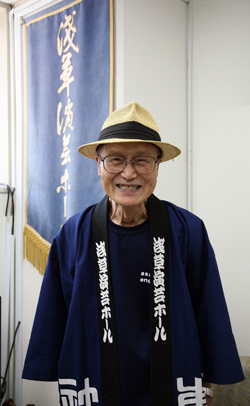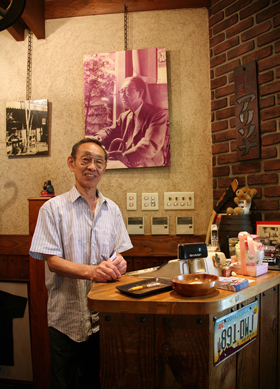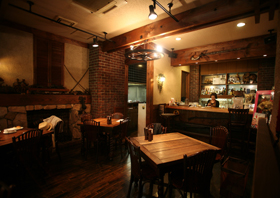
Hisayuki Matsukura, a president of Asakusa Engei Hall
We talked with Hisayuki Matsukura, a president of Asakusa Engei Hall. This interview was conducted in August 2014.
Q: Could you talk about the relationship between Asakusa District No. 6 and entertainment?
Matsukura : The precincts of Senso-ji Temple were divided into seven sections after the Meiji Restoration. On that occasion, show tents that stood in Okuyama located at the rear of Senso-ji Temple were moved to Asakusa District No. 6. Then, playhouses were built here and there. My forefather also built a playhouse called "Sanyukan" in the Meiji Period.
Q: At that time, were there many moving picture theaters?
There were not so many moving picture theaters, but a lot of playhouses were. Although it is the same as it is now, many entertainers wanted to perform plays in Asakusa. Considering that there are more than 100 theatrical companies in Japan. it is amazing.
Q: Are many plays still performed in Asakusa District No. 6?
Yes. The Shitamachi Theater Festival is also held in Taito City. Many actors apply for roles in the festival. When silent movies were introduced in the Taisho Period, all playhouses were converted into movie theaters. Then, film narrators appeared. At that time, there were more than 100 film narrators in Asakusa District No. 6 alone.
Q: There is a monument in commemoration of film narrators in the precincts of Senso-ji Temple, isn't there?
Yes, there is. There were many film narrators, including Musei Tokugawa. Some of them were much in demand, and the others were not.
Q: Did Musei Tokugawa work in this hall?
Yes, he did. And, Mitsugi Okura (*) also worked as a film narrator. Later, talking films, in which screen images and voices are synchronized, appeared around 1931, and film narrators lost their jobs. Those film narrators gave up their jobs and started new careers, such as a comic storyteller, jester, Naniwabushi reciter, traditional Japanese storyteller and others. So, film narrators played an important role.
*Mitsugi Okura
He started his career as a film narrator, and later became a president of Shintoho Company and Okura Movie. The monument in commemoration of film narrators in the precincts of Senso-ji Temple was built with Okura's efforts and cooperation from five film companies in Japan in 1958.
Q: Have you worked in this hall since your earlier years?
Yes, I began to work here right after the Second World War. It was the time when Kafu Nagai often came to this hall, so it was a quite long time ago. The present hall was built in 1951, so I have worked here since that time. I was very young at that time. I was born in 1835, so I was still a teenager. A variety of film narrators came to Asakusa.
Q: I heard that Kafu Nagai took a bath in this building.
There is still a bathtub in the basement of this building. Kafu Nagai took a bath with female dancers. (continued in the right column)
At that time, he was quite old, so he said, "I am harmless, so it is OK to take a bath with me. " He was also an eccentric man, and avoided people involved in the media. When media workers came here, and asked our staff to meet Kafu Nagai, he said, "I am absent." He himself said he was absent. He was a very humorous person.
Q: Did Kafu Nagai often take a walk around here?
Yes. He often strolled in this area. He routinely ate Western food at ARIZONA KITCHEN, and Soba at Owariya. (continued in the lower column)

When Kafu Nagai frequented ARIZONA KITCHEN, Rikiya's fater run the restaurant.

It is a Western-style restaurant modeled after restaurants in Arizona, the United States. The interior has not changed very much since Kafu Nagai frequented it.
Unfortunately, Arizona has ceased business for a long time.
Q: Has the building of Asakusa Engei Hall changed since its establishment?
Not changed. All it has changed is that the 4th and 5th floors were added. Originally it was a three-story building.
Q: Did the pesent-day Toyokan also not exist when the hall was established?
The present-day Toyokan did not exist when the building was founded. When Asakusa France-za opened in 1951, there was not Toyokan. Later, the upper floors were build, and an regular venue for Rakugo comic storytelling was made.
Q: At that time, what was on the stage of Asakusa France-za?
At first striptease shows were performed. Asakusa France-za was famous for its double-featured program, striptease shows and plays. Kiyoshi Atsumi, Isamu Nagato, Kinichi Hagimoto and others cultivated their skills in those plays. (continued in the next page)

Hisayuki Matsukura, a president of Asakusa Engei Hall










